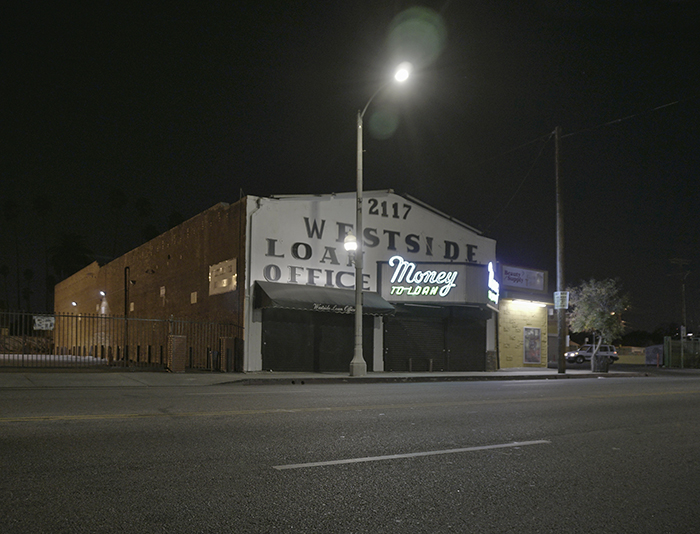
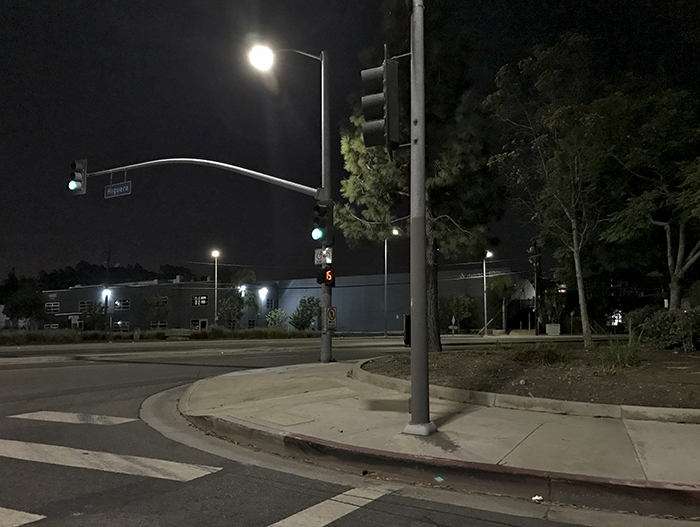
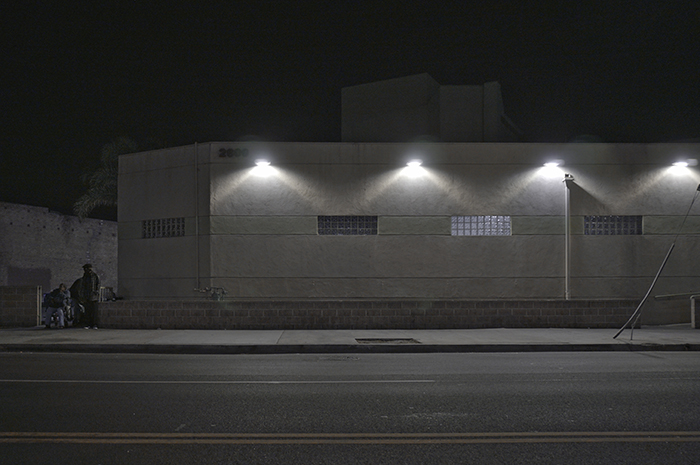
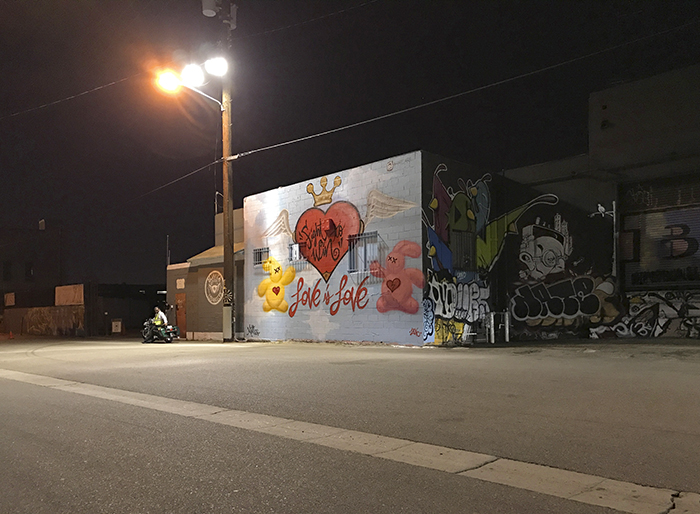
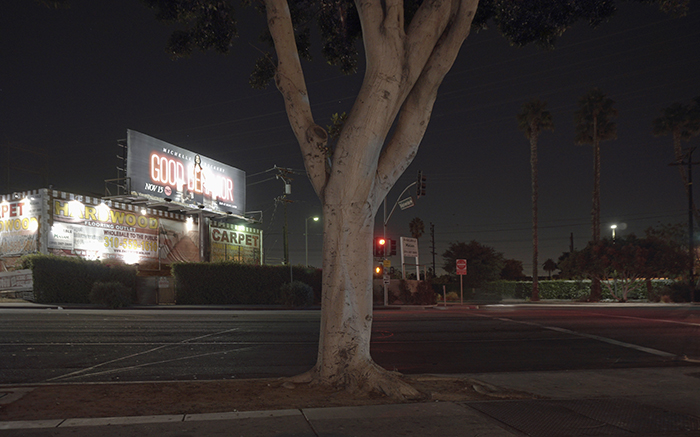
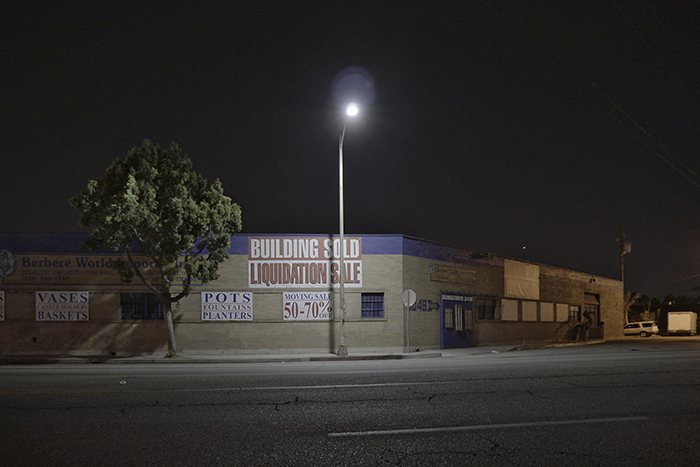
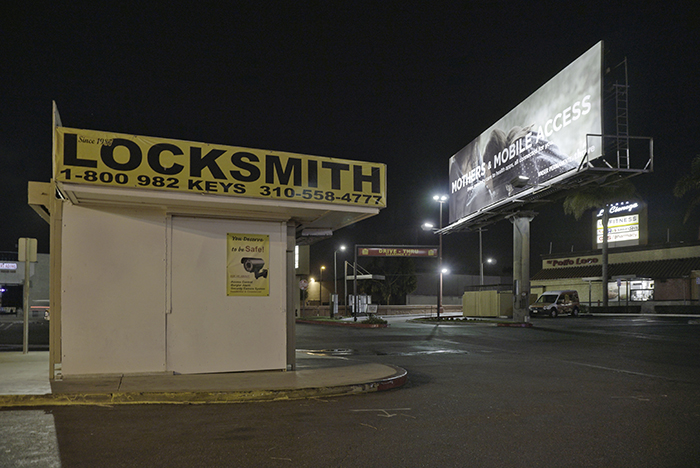
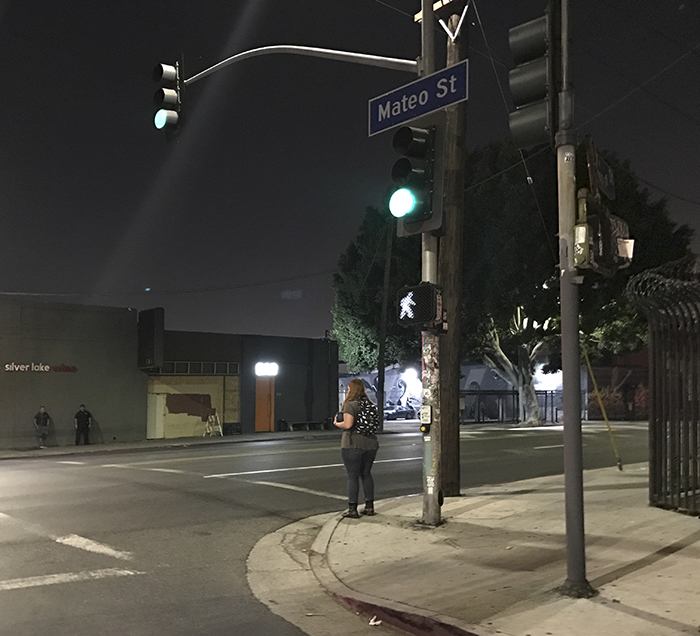
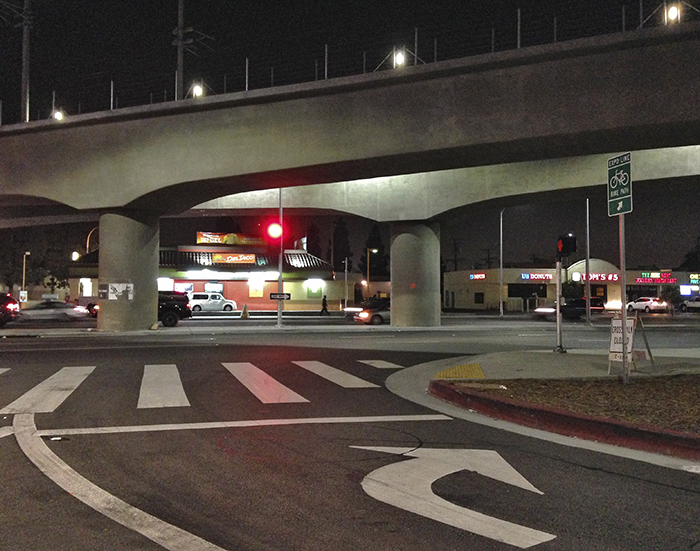
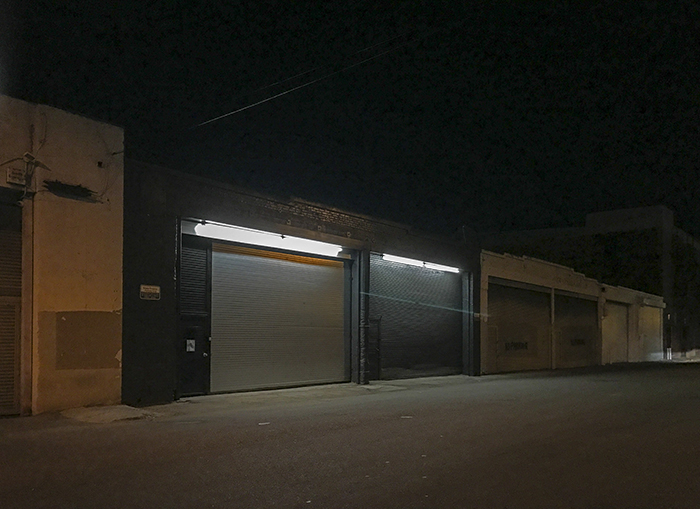
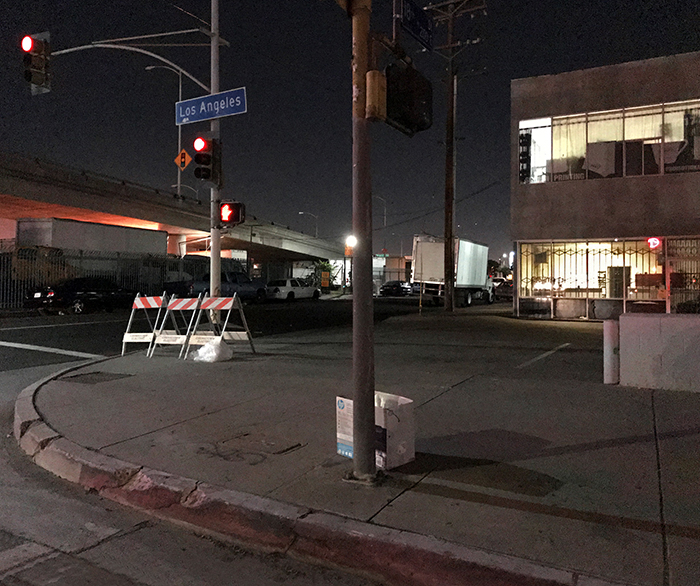
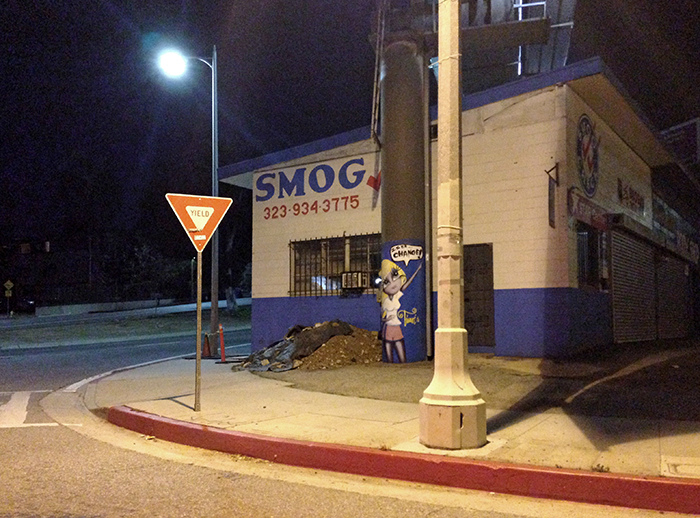
The irony of the lonely city -- of the quietly desperate life led in the midst of the urban throng -- has likely been a cliché for as long as there have been cities. If this cliché is indeed true, the loneliest city may be Los Angeles. According to the U.S. Census Bureau, the city's metropolitan area has a total area of 4,850 square miles, making it the largest metropolitan region in the United States by land area, and buffering its 3.8 million residents with ample personal space to prevent the casual daily interaction common to more population-dense cities like New York.
In addition, LA's remarkably under-developed mass transit system imposes the need for most Angelenos to commute by car, further isolating them from one another in private, glass and metal containers.
I feel LA's loneliness most acutely at night, when darkness reduces the visible world to halogen or tungsten pools of street- and security-lights, neon signs and ubiquitous billboards.
These images depict an urban landscape as sparsely populated as the aftermath of apocalypse -- perhaps zombie-, earthquake- or rapture-induced -- any of which are apt for LA. Of course, any exploration of urban emptiness owes a spiritual debt to Edward Hopper, his teacher Robert Henri, and the Ashcan School. Hopper chose vantage points that enforce the viewer's sense of isolation. Whereas Hopper uses stark building edifices and angular geometries to trap, as Olivia Laing writes in 'The Lonely City,' his "people alone... in uneasy, uncommunicative groupings of twos and threes," I choose a vantage endemic to LA: my car.
Pausing a moment in a desolate spot, feeling the strangeness of the light, discerning only murky shapes beyond it... then moving on. In this dark world but not of it, not unlike how we move through our lives, passing from one pool of light to the next, encapsulated in our individual bubbles of perception.

|